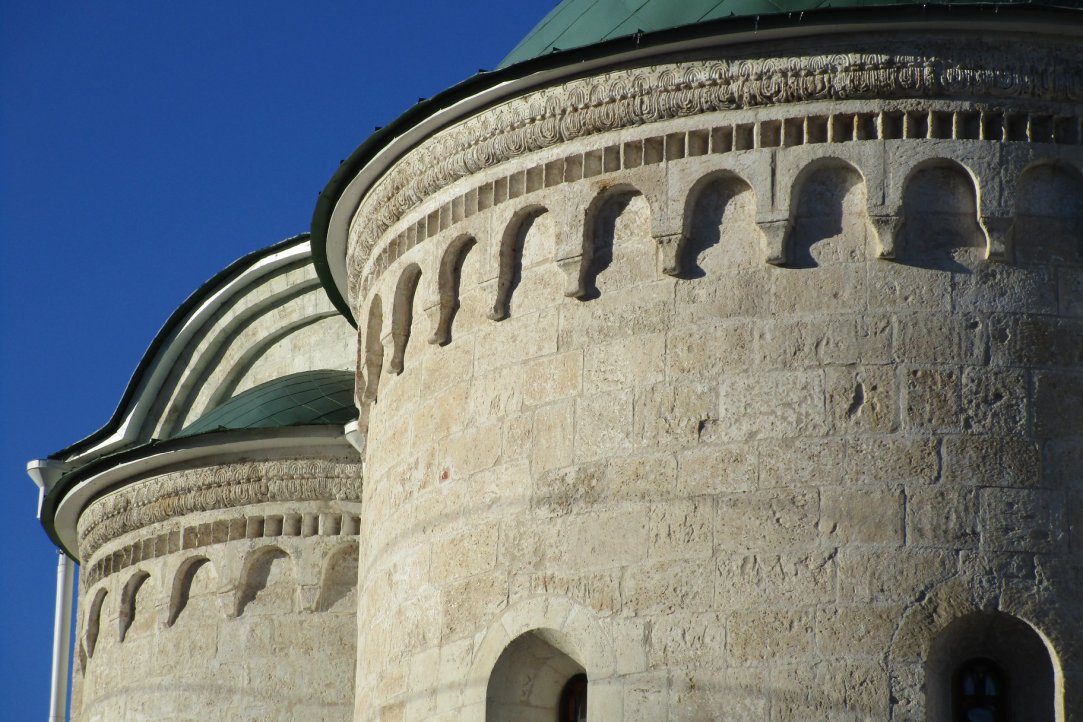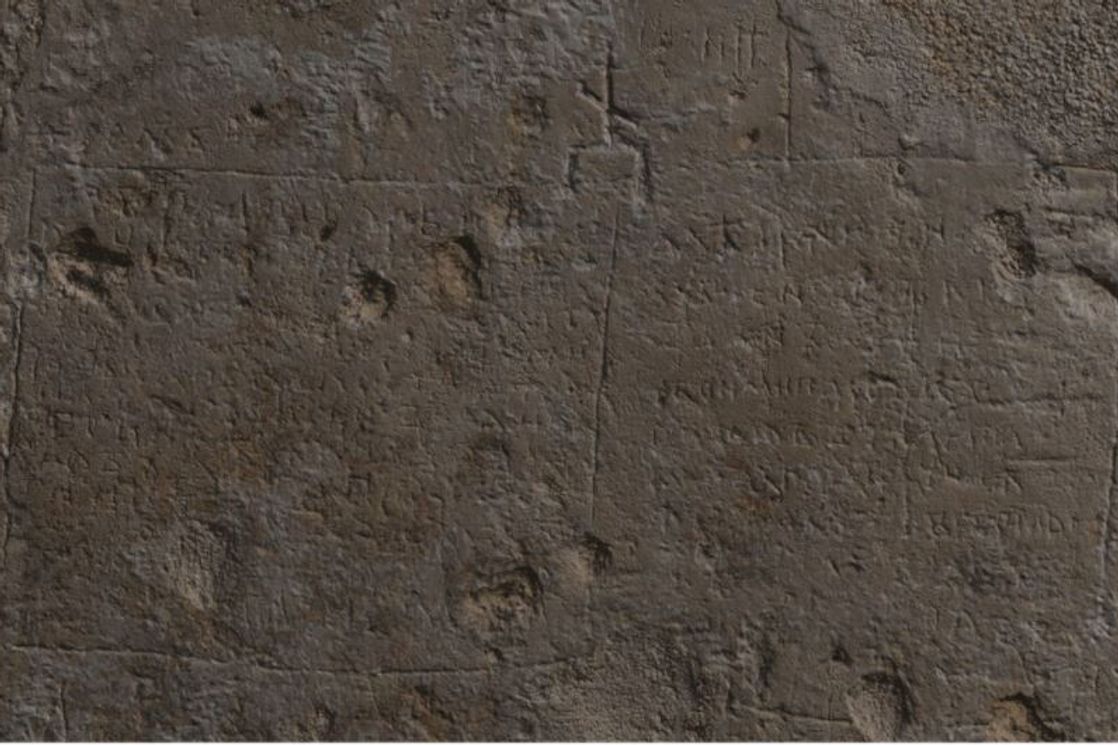3D-Modelling Helps Read Ancient Russian Inscriptions of the 12th and 13th Centuries

Using 3D-modelling, researchers of HSE and the Institute of Slavic Studies of the Russian Academy of Sciences (RAS) have restored and deciphered an ancient literary monument of North-Eastern Ancient Rus — inscriptions about the murder of Prince Andrey Bogolyubsky written in 1175–1176 on a wall of the cathedral in Pereslavl-Zalessky. The study was published in Slověne = Словѣне. International Journal of Slavic Studies.
The 3D-model of the inscription is available on a specially created website which also displays models of three court decrees of the 13th century from the church of Saint Paitelemon in Galich—the most important written records of Southern Ancient Rus. The study was conducted with support from the Russian Science Foundation (RSF).
Alexey Gippius, Corresponding Member of RAS, Leading Research Fellow of the HSE Laboratory of Linguo-Semiotic Studies, Head of the RSF Grant Project

3-D modelling appears to be very helpful in studying ancient inscriptions. This is the most efficient way of recording ancient epigraphic monuments. It is crucial to preserve writings that can be easily destroyed due to erosion of stone surfaces. It is also an effective tool for independently verifying the accuracy of a proposed reading. This is very useful for epigraphy studies as it helps avoid a variety of subjective interpretations, which is not quite uncommon in this science. Moreover, the publicly accessible page of the RSSDA laboratory’s website allows everyone who is keen on the history of Rus to become acquainted with authentic samples of ancient writings.
Andrey Bogolyubsky was one of the most famous Russian princes of the pre-Mongol period. He ruled Vladimir from 1157 to 1174 and was the first prince in the Rurik Dynasty to refuse to move to Kiev after receiving the title of Grand Duke. He remained in Vladimir and founded the Vladimir Grand Principality. This changed the course of political history for Ancient Rus and marked the beginning of the gradual decline of Kiev as the political capital. Andrey Bogolyubsky made the Vladimir Principality one of the most powerful areas in the Ancient Rus. The principality included cities such as Suzdal, Rostov, and then recently founded Moscow. However, as he strengthened his autocratic power and heavy-handed rules, the prince set himself at odds with a large number of lieges. The conflict led to a conspiracy against him, and the prince was murdered on June 29, 1174.
In the autumn of 2015, an inscription describing the murder of Andrey Bogolyubsky was discovered on the outside wall of the southern apse of the 12th-century Spaso-Preobrazhensky Cathedral in Pereslavl-Zalessky during a cleaning of the structure’s walls. It lists the killers, curses them, and proclaims eternal memory for the assassinated prince. The inscription must have been made in 1175–1176, when Pereslavl was ruled by Vsevolod Yurievich, Andrey’s younger brother. This makes it the most ancient and more or less precisely dated written record of North-Eastern Rus.

The inscription was damaged significantly, which made it hard to decipher. There were a number of inaccuracies and gaps in the original text. The final publication of researchers of HSE University and the RAS Institute of Slavic Studies (Moscow) represents a much more complete version—thanks largely to the 3D-model developed photogrammetrically at the Remote Sensing and Spatial Data Analysis Laboratory (RSSDA).
Having studied a large number of digital photos, the researchers developed a 3-D model of the inscription. They applied mathematical algorithms to the surface to ‘highlight’ the damaged areas and make them more legible. This allowed the researchers to decipher the entire list of conspirers, which includes twelve names (only four of which are mentioned in Old Russian letopises).
Some small but important facts were discovered. For instance, the patronymic of Yakim, one of the ringleaders, is spelt with the Russian letter ‘ц’ [ts]—Куцкович [Kutskovich], which suggests that his father, Kuchka, may have come from Novgorod. The researchers trace the patronymic of another conspirer, Efrem Moeezich, to the Arabic name Mu’izz, which suggests that he may have been a descendent of a Muslim from Volga Bulgaria. Last on the list of conspirors is the most unusual name, Styriaga. The researchers additionally found this name in the long old Russian Glagolitic inscription which was discovered in 2017 in the ruins of the Church of the Annunciation at Gorodishche, Novgorod. The inscription from Pereslavl-Zalessky is important for the history of the Russian Church as well, as this is the most ancient instance of proclaiming an anathema on conspirers against the state in Ancient Rus. The text is also significant as a source on the history of the Russian language. In particular, it demonstrates significant advancement in the reduction of the [ъ] and [ь] sounds, which was indeed occurring at that time in the second half of the 12th century.
3D-modelling was previously helpful in studying the unique set of epigraphic sources of Southern Ancient Rus—inscriptions in the Church of Saint Paitelemon in Galich. Over the past years, they have been published on a number of occasions, which gave rise to a great variety of interpretations. Now the decrees of three Galician princes of the 13th century can be examined anew thanks to photogrammetrical inscription documenting, their 3-D models, and further studies conducted in cooperation with colleagues from the Ancient Galich national reserve and Ivano-Frankovsky University (Ukraine). Written on the temple walls, these most ancient samples of Russian legal documents are a ‘stone archive’, currently available to the public on the RSSDA laboratory website. The site also displays other inscriptions, studies of which are expected to be published in academic sources.
The researchers plan to continue their studies. They will soon release new publications on ancient inscriptions of Novgorod, Kiev, Smolensk, Ryazan, and other ancient Russian cities. The online database called ‘Ancient Russian Epigraphic Sources from 11th to 15th Centuries’ has been developed and is currently being completed.

